Table of Contents
ToggleIn the ever-evolving world of cloud computing, Platform as a Service (PaaS) stands out like a superhero in a techie cape. It swoops in to save developers from the drudgery of managing infrastructure, letting them focus on what they do best: building amazing applications. Imagine having a fully equipped workshop where you can craft your digital masterpieces without worrying about the pesky details of servers and storage. Sounds dreamy, right?
Overview of PaaS in Cloud Computing
Platform as a Service (PaaS) offers a powerful solution within cloud computing, enabling developers to focus exclusively on application creation. By utilizing PaaS, programmers access a robust environment that simplifies deployment and scaling processes. Comprehensive tools and services come together in one place, enhancing development speed and efficiency.
Development teams can leverage various integrated tools provided by PaaS platforms. These tools often include database management systems, middleware, and business analytics, ensuring seamless collaboration throughout the application lifecycle. Organizations can avoid the complexities associated with infrastructure management and concentrate on innovation instead.
Cost-effectiveness emerges as another significant advantage of PaaS. Companies reduce overhead by eliminating the need for hardware procurement and maintenance, instead paying for the services consumed. Pricing models typically follow a pay-as-you-go approach, aligning costs with usage and providing flexibility.
Integration capabilities are vital as well, allowing developers to connect applications with existing services and third-party solutions effortlessly. This interoperability creates a more cohesive development environment, facilitating seamless data flow among applications.
Security features inherent in PaaS offerings enhance data protection and compliance with industry standards. With built-in security protocols and regular updates, developers can ensure that applications remain secure throughout development and after deployment.
Overall, PaaS simplifies the development process by providing essential tools, cost savings, and secure scalability, making it an attractive option in the growing landscape of cloud computing.
Key Features of PaaS

PaaS streamlines application development by offering a range of features tailored to enhance productivity and efficiency.
Development Frameworks
Development frameworks provided by PaaS platforms support a variety of programming languages and tools. These frameworks enable developers to work in environments that suit their coding preferences. Robust libraries and pre-built components accelerate application development. Scalability remains a priority, as developers can easily extend applications to accommodate user demands. Frequent updates and support for modern development practices ensure that platforms align with industry standards. Collaboration features integrated into these frameworks promote teamwork and quick iterations throughout the development lifecycle.
Middleware Services
Middleware services play a crucial role in connecting different applications and components within the PaaS environment. They facilitate communication between diverse software systems, enhancing interoperability. By managing data exchange and application logic, middleware services help maintain efficient workflows. Additionally, these services include support for APIs, which allow seamless integration with external services and databases. Customization options allow developers to tailor middleware solutions based on specific project needs. Overall, middleware services simplify complex tasks, reducing the time taken to deploy and maintain applications.
Advantages of PaaS
PaaS offers significant benefits for developers and organizations, primarily by enhancing productivity and reducing costs associated with application development.
Cost Efficiency
Cost efficiency stands out as one of the leading advantages of PaaS. By eliminating the need for companies to invest in hardware and infrastructure, businesses can allocate their budgets to other critical areas. The pay-as-you-go pricing model permits organizations to scale costs based on actual usage, providing flexibility that traditional models lack. Companies experience a reduction in operational costs through minimized maintenance and support requirements. PaaS also simplifies budgeting, allowing teams to forecast expenses more accurately. This financial advantage leads to quicker adoption of projects and fosters an environment for innovation.
Scalability
Scalability is another key benefit of PaaS, supporting business growth without causing disruptions. Developers can quickly adjust resources in response to fluctuating demand, ensuring optimal performance during peak times. The automatic scaling of resources facilitates rapid deployment of applications to larger user bases. Enhanced scalability also allows companies to experiment with new features or expand services without overhauling existing infrastructure. As businesses grow, PaaS environments easily adapt, maintaining service quality while accommodating increased loads. Fast-growing organizations rely on this capability to sustain their competitive edge and streamline their operations efficiently.
Popular PaaS Providers
Several leading PaaS providers dominate the cloud computing landscape, each offering unique features and benefits tailored to developers’ needs.
Microsoft Azure
Microsoft Azure provides a comprehensive set of tools for application development and deployment. It supports multiple programming languages, enabling developers to utilize frameworks they are comfortable with. Integrated services like Azure SQL Database and Azure DevOps enhance productivity by streamlining the development workflow. The platform also offers scalable resources, allowing companies to adjust capacity based on demand. Enhanced security features, such as identity management and threat protection, ensure data remains secure throughout the application lifecycle. With a global network of data centers, Microsoft Azure delivers reliable performance across various regions.
Google App Engine
Google App Engine simplifies the process of building and managing applications. Developers benefit from automatic scaling, which adjusts resources based on traffic spikes without manual intervention. A wide selection of programming languages is supported, including Java, Python, and Go, catering to diverse development preferences. The integration with Google Cloud services offers capabilities like cloud storage and machine learning, enriching application functionality. Security measures, such as built-in firewalls and automatic updates, enhance data protection within the platform. Its pay-as-you-go pricing model allows businesses to control costs, aligning expenses with actual usage and optimizing budget management.
Challenges of PaaS
PaaS presents several challenges that organizations must navigate. Understanding these challenges is essential for effective cloud computing.
Security Concerns
Security remains a primary concern for PaaS users. While providers implement strong security measures, vulnerabilities may still exist. Data breaches can occur if applications lack proper protection. Compliance with regulations adds complexity, as organizations must ensure security standards align with PaaS offerings. Continuous monitoring and audits are necessary to maintain security integrity. Furthermore, shared resources may expose sensitive data if not managed correctly. Organizations often face additional challenges in managing access controls and identity management across multiple platforms.
Vendor Lock-in
Vendor lock-in poses a significant risk with PaaS solutions. Switching providers can become complex and costly as applications become tightly coupled with specific platforms. Migrating data and services often leads to significant downtime and business disruptions. This dependence on a single vendor limits flexibility and scalability options. Developers may find it challenging to integrate third-party tools and services. Organizations must assess the long-term implications of selecting a PaaS provider to avoid being locked into a single ecosystem. Establishing exit strategies and using open standards can help mitigate these risks.
PaaS stands out as a vital component in the cloud computing ecosystem. By streamlining application development and providing essential tools, it empowers developers to focus on innovation rather than infrastructure. The flexibility and cost-effectiveness of PaaS make it an appealing choice for organizations aiming to enhance productivity while managing expenses.
As businesses navigate the complexities of digital transformation, PaaS offers a pathway to scalability and collaboration. While challenges like security and vendor lock-in require careful consideration, the advantages of adopting a PaaS model often outweigh the risks. Ultimately, PaaS is reshaping how applications are built and deployed, positioning itself as a key player in the future of technology.







